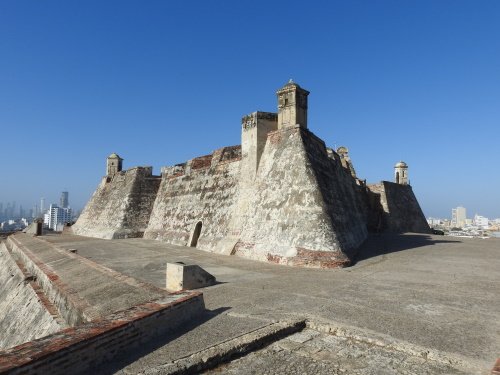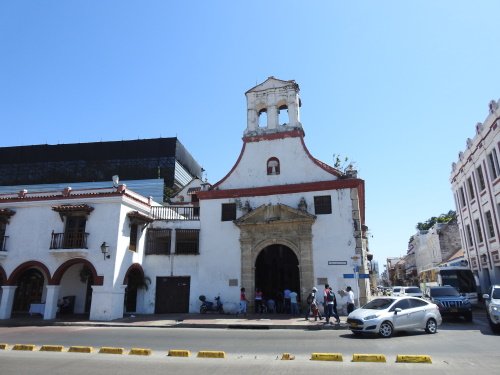Els Slots
WHS #731: Cartagena de Indias
A visit to Cartagena does leave you with mixed feelings. On the one hand it is Colombia’s most vibrant city which also has preserved its historical core. On the other hand it is so fully geared to tourism that sooner or later you will get fed up with it, trying to fend off the stream of sellers of water and hats and avoid the ubiquitous tour groups. I had about 2 full days there, which I found a good amount of time. When you walk away a bit from the clock tower area and the busiest parts of the historic center, it certainly gets enjoyable. The city also has an accessible and low-key airport with long haul connections, for example to Amsterdam, New York and Lima.

The town’s OUV mostly is about its military fortresses and port. So on my first morning in the city I walked via the bridge from the center to the big fort on the other side of the bay. The Fort San Felipe de Barajas opens at 8 a.m. and I was one of the first visitors of the day, so it was very quiet. It is a fort built by the Spaniards in 1536, intended to expel the English from the Colombian coast.
Reportedly, it is the largest fort in South America. But only a small part dates from the 16th century, in the 17th and 18th centuries the structure was significantly enlarged to the large, bulky mass that it is now. There is a system of tunnels under the entire complex. In the former hospital you can watch a 20-minute video explaining in detail how the Spaniards defeated the English fleet. It's already worth going in there for the strong airconditioning.
From the highest point of the fort you have a good view of the city of Cartagena. What is striking is how many high-rise buildings there are - when I came flying in from Bogota it seemed as if we were landing in Dubai. The historic center within the city walls has also not escaped the more modern, higher buildings. They now often keep only the historic façades and build entirely new hotels and shopping centers behind them.

One of the best things to do in Cartagena is walk the city walls. They still are about 70% intact and you can walk on it for most stretches. At sunset I walked the full loop, it is nice to see the city from different angles in this way. I for example discovered the former monastery La Merced and the theater next to it, two fine Italy-inspired buildings.
Another area worth exploring is Getsemani. This is the neighborhood, outside of the city walls but inside the WHS core zone, where the poor people of Cartagena used to live. Here also the uprising against the Spaniards and for independence began. For these people it has now become unaffordable - just about everything here has been converted into guest houses, restaurants, shops and cafés. It is a nice area to stroll through though. Bits of Coral Masonry can still be seen in the walls. I visited it on a walking tour with a small group, but you can easily do it on your own.

There are a number of churches and museums as well in the historic center, but I found them overpriced. The entrance fees that you pay here in Cartagena are a lot higher than in the rest of the country. It generally costs 20,000 - 25,000 pesos per attraction (around 5-7 EUR). I entered 2 churches (the Cathedral and the Church of San Pedro Claver), but as in general in Colombia I found the interior of the churches to be not very rich. No comparison to Quito for example! I also visited 2 museums: the Inquisition building and the Maritime Museum. Both are located in beautiful historic buildings and for that you actually have to go inside. There aren’t many original items among the exhibits however, most of it consists of information panels.
More on
Els SlotsComments
No comments yet.
